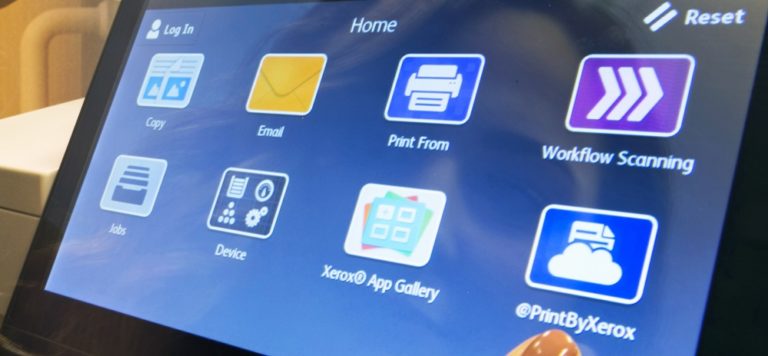Customer experience – the art and science of designing and deploying better, more consistent experiences across all “touchpoints” – is evolving fast.
As more and more companies realize that product differentiation is transient, they’re turning to customer experience as the source of advantage. But as a holistic discipline, customer experience (CX) is still fairly new.
Another, similar discipline has been around a bit longer: user experience. UX, as Wikipedia puts it, “includes the practical, experiential, affective, meaningful and valuable aspects of human–computer interaction and product ownership.”
Since the dawn of the Web, the UX people have developed ideas, tools, and techniques that help them design better websites, software, and mobile apps.
So here’s the question: what can CX people learn from the UX pros? Here are some thoughts:
A User-Centric Mindset
The best UX people start with users and their needs before a pencil ever touches paper. “What do we want them to do?” is a question sales or marketing people often ask. “What do they want to do?” is the starting point of UX pros.
To answer that question, they go to the source: users. Through interviewing, they develop written personas – lists of defining characteristics – to help them focus on different categories of users and what they want. There are always multiple personas, because there is never just one universal user.
Of equal importance, the UX pros do not ask the company to characterize the needs of their customers. The inherent bias of that feedback will always be tainted.
Maybe we’d all design better customer interactions if we really started with our users, not with our own agenda. A big part of this is recognizing that we have multiple groups of users, each with different needs. It’s not a one-size-fits-all proposition, yet companies routinely throw all their users into a single box.
Make It Conventional
Good UX doesn’t break structural convention.. You don’t find many horizontal scrolling ecommerce sites, for instance. Good UX also uses good information design, so users find things where they expect to find them. It all adds up to a feeling of familiarity with the structure. That familiarity lets the value of the content shine through.
Restaurants that “re-invent the ordering experience”0 often annoy more guests than they please. If everyone already understands something… it ain’t broke. Don’t make them learn Latin if all they want is a cup of coffee.
Make It Intuitive
One of the best UX books we’ve read is called “Don’t Make Me Think” by Steve Krug. His central premise is simple: Don’t make users guess where a feature is hiding or figure out how to do a simple task. Make it super-obvious.
How many baffling interactions with companies have we all had? Returning a rental car used to be a process Rubik’s Cube. Now, for the better rental companies, it’s as simple as driving up and giving the keys to the agent.
Make It Personal
The best websites use what they know about the customer to deliver a more relevant experience, instead of a generic one. Returning users feel good about being recognized.
Could your customer experiences beyond the Web be just as personalized? If that rental car company knows you like convertibles, wouldn’t it be great if they had one waiting for you? Or, failing that, perhaps a note: “Hi John, Sorry we’re out of convertibles. We hope this vehicle will be comfortable for you. Have a great visit here in Seattle.”
Let the User Control the Experience
Each of us has our own experience, our own individual responses to a given condition. As highly designed as Disney World is, different people have different strategies for navigating through it, different goals, and different outcomes.
So a good UX designer doesn’t try to limit or codify user experience. Instead, they design an environment where experiences can be found. Using wireframes, they design multiple paths through a website and consider multiple contexts.
Companies can build plans, like wireframes, for designing better and more fluid customer interactions. Where is it written that all interactions must be centralized and controlled through service reps? Or that you only see clients once a year at a user conference? There are many ways to journey through Disney World, but nearly everyone leaves with a smile.
Make It Conversational
Joshua Brewer, former principal designer at Twitter, notes that UX should be a conversation. UX professionals seek a dialog with users to find out how to best help them. So UX becomes more like a service, not a one-off, reactive project. The conversation metaphor defines how to deliver, how to improve, and how to stay relevant.
Conversations move from topic to topic and it’s not always about work. Sure, send users a survey and acknowledge their participation. But also do things like sponsor events where you can listen to customers as well as speak to them. Or build in feedback loops through the customer journey.
Make It Progressive
Learning anything entails some elements of challenge or stress. The needs of a new user can differ greatly from a familiar user, and differ yet again from a power user. A person can pass from one UX persona to the next in the course of a progressive experience. A company that recognizes and adjusts to that growth could win real loyalty.
Can your customer experience be more progressive? One example: Loyalty programs let companies treat frequent customers differently than new ones. They also collect valuable data about each customer’s patterns and preferences so they can make every engagement more relevant and useful.
Make It with Feeling
UX blogger Whitney Hess notes that ease of use isn’t the only measure of a positive user experience; enjoyment is just as important. Something can be clear and simple, but if it’s boring or cold it can feel tough to get through. Designs should have flourishes of warmth, kindness, whimsy, richness – anything that makes the person feel engaged and energized.
Look for occasions and ways to smile or say “Thank you” in unexpected places in the customer journey. A cold glass of lemonade for customers lining up at a ticket counter. Offering the choice of ukulele or tuba on hold. Build thoughtfulness and a wink into routine transactions (where it makes sense of course).
Get Casual Visitors to Engage More
David Richards of Google AdSense offers some tips for converting one-time visitors into repeat visitors:
New content. Constantly provide new, high-quality content on your top landing pages.
Related content. Show users similar content elsewhere on your site.
Social. Make it easy for users to connect with you via social networks.
Email. Let users subscribe to your email list for updates.
User engagement. Make it easy to interact through forums, ratings and recommendations.
What are the analogs for this kind of engagement-building in the non-digital world? Maybe it’s constantly freshening up shop windows. Or creating ‘If you like this, you’ll like these’ in retail stores. Or building in feedback systems in B2B processes. The UX mindset might make it easier to spot these opportunities.
Reduce Latency
In pursuing more thoughtful UX goals, never disregard the simple ones. A slow website is a failure. Make it fast.
Look for ways to speed up your customer’s interaction with your company as well. Too many commercial interactions put the burden of administration on the customer. Customers will respect you if you respect their time.
Testing, Testing, Testing
UX people test everything. They’ve learned that their hunches are an unreliable guide to better interface design. The right testing methodologies (implicit, explicit, creative) will vary from one case to another, but there is no case where testing is not essential to continued success.
How many of your customers’ experiences have been derived from testing? Do you have data to support the most important customer-facing processes in your business?
In Summary: UX-ify Your CX
UX and CX are different things. But as you design customer experiences and journeys for your business, it can help to think like a UX pro.
No, the world doesn’t always behave like software, but a disciplined, data-driven, empathetic approach to customer experience can only lead to happier customers who return again and again.
Subscribe to this blog and receive email updates when we publish a new article.




This is a really great article. Many of the points here are things I’ve been “shouting from the mountain top” for years. It’s good to see these principles being embraced by others now.
I’ve read Steve Krug’s “Don’t Make Me Think.” Even though it’s now a fairly old book (I think about 10 or 12 years old) the overarching principles he presents are still as valid as ever.
Jakob Nielsen also teaches similarly to this article, and to Steve Krug’s usability standards.
Articles like this one help us to remember that it’s all about the user. As a UI/UX Architect, I feel it’s important to be reminded of what we should be thinking about sometimes regarding the User Experience, and now the Customer Experience.
[…] L’article original a été initialement publié sur le blog Simplify Work […]